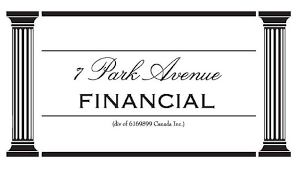|
Inventory Financing Canada : Sweating It Out On Business Loans For Inventories?
Canadian Business Guide: Inventory Financing That Actually Works
YOUR COMPANY IS LOOKING FOR CANADIAN INVENTORY FINANCE!
You've arrived at the right address! Welcome to 7 Park Avenue Financial
UPDATED 07/09/2025
Financing & Cash flow are the biggest issues facing business today
ARE YOU UNAWARE OR DISSATISFIED WITH YOUR CURRENT BUSINESS FINANCING OPTIONS?
CONTACT US
CALL NOW - DIRECT LINE - 416 319 5769 - Let's talk or arrange a meeting to discuss your needs
EMAIL - sprokop@7parkavenuefinancial.com

INVENTORY FINANCING GUIDE
Inventory financing in Canada is often a key component of the business loan challenge.
That challenge is ensuring the right mix of working capital financing for inventories and that it complements your other external financing.
Inventory financing works by allowing businesses to obtain funding using their inventory as collateral, making it easier to access capital for buying inventory and maintaining inventory levels, all while preserving their working capital for other business needs.
This type of inventory financing work typically involves asset-based lending, where lenders provide credit based on the value of the inventory held.
One major advantage is that it enables businesses to take advantage of growth opportunities, promotions, or supplier discounts without straining cash flow. Inventory financing is especially useful during periods of high demand, as it allows companies to maintain inventory levels and meet customer needs efficiently.
By providing funding for buying inventory, inventory financing supports ongoing business growth and smooth operations. Let’s dig in.
Breaking Free from Inventory Cash Flow Traps
Your inventory represents thousands of dollars in tied-up capital while bills pile up.
Traditional lenders don't understand your stock's true value, leaving you cash-strapped despite having valuable assets.
Let the 7 Park Avenue Financial team show you how An inventory financing arrangement unlocks your inventory's potential, converting stock into immediate working capital so you can pay suppliers, cover expenses, and grow confidently.
Introduction to Inventory Financing
Inventory financing is a valuable type of financing that enables businesses to purchase inventory and keep their cash flow steady, especially when responding to shifts in customer demand.
For many companies, maintaining the right inventory levels is crucial to meet customer demand during both busy and slow seasons. With inventory financing, businesses can access a line of credit secured by their company’s inventory, using these business assets as collateral rather than tying up personal assets or draining their bank account.
This type of financing works by allowing businesses to draw funds as needed to purchase inventory, and they only pay interest on the amount borrowed.
By leveraging inventory financing, companies can ensure they have the inventory supplies required to fulfill orders and keep operations running smoothly, all while preserving their working capital for other business needs.
The Evolution of Inventory Financing
In times gone by, inventory financing was most often provided by Canadian chartered banks as a product of the overall revolving line of credit, which of course usually included receivables also.
The ability of a company to free up cash that is tied up in inventory is critical for a firm’s cash flow. These days, traditional financing is perceived as “hard to get,” having many owners and managers sweating it out in this key area of their business.
As a result, the short term loan has become a popular alternative for businesses seeking quick access to capital for inventory needs, offering fast funding with a short repayment period to support immediate business requirements.
Understanding Working Capital and Cash Flow
Have you heard the line: “If your working capital is positive, you need cash flow financing”?
The working capital definition referred to is, of course, the classic textbook definition of going to your balance sheet and subtracting current liabilities from current assets.
Lenders often review the company's inventory value on the balance sheet, comparing figures from the previous year and current year to assess financial health and borrowing capacity.
However, most of us operate in the real world, not the textbook world.
So how do we finance inventory that we as business owners and financial managers know is good collateral? Understanding the inventory's value is crucial when seeking financing, as it directly impacts borrowing limits and the appraisal of your assets.
The Lender's Perspective on Inventory
What the Canadian business owner and financial manager must realize is that your bank or independent inventory financier is not interested in ever getting back your inventory.
That should lead you to focus very strongly on your ability to project your inventory turnover, its overall marketability, and your ability to qualify the inventory into several categories—which include raw materials, work in process, and finished goods.
Success breeds challenges because when you are turning over your inventory, you need to replace it. Inventory financing enables businesses to maintain sufficient stock to increase sales and efficiently sell inventory.
This type of financing supports your business until the inventory is sold, helping to facilitate cash flow and improve sales performance.
Quite often, the financial investment you have made in inventory is still part of your overall cash conversion cycle—which is, of course: inventory, receivable, cash, in that order.
The Power of Asset-Based Financing
Combined with accounts receivable finance solutions, asset loans are powerful working capital drivers—simply because, unlike bank facilities that are ratio and financial statement performance-driven, they are in fact collateral and true value-driven.
So a proper facility, when set up, margins your receivables and inventory to their true agreed-upon values.
What we are, of course, saying is that if you have slow-moving inventory and uncollectible receivables, you will be a poor candidate for an inventory financing facility. However, businesses with strong inventory positions can secure funding by using their inventory as collateral, allowing them to access financing that may not be available through traditional loans.
It is essential to carefully review and compare financing terms, such as repayment schedules and interest rates, before entering into any inventory financing arrangement.
Types of Financing Options
Businesses have several financing options to choose from when looking to fund their operations and inventory purchases.
Term loans are a common choice, providing a lump sum of money that is repaid over a fixed period with interest. Lines of credit offer more flexibility, allowing businesses to borrow and repay funds as needed, which can be especially useful for managing day to day operations.
Inventory financing is a specialized type of financing designed specifically for businesses that need to purchase inventory. With inventory financing, most lenders provide a loan or line of credit that is secured by the company’s inventory, and the business repays the loan over time, often with interest.
The terms of these loans can vary depending on the lender and the business’s credit history, but inventory financing remains a popular option for companies looking to increase inventory supplies and update product lines without straining their cash reserves.
Essential Systems and Controls
In order to achieve a proper facility, focus on maintaining adequate inventory reports and controls.
Ultimately, a perpetual inventory system is the best method of securing inventory finance because it, of course, helps focus on the true picture of your inventory movement.
Inventory management systems play a crucial role in tracking, controlling, and optimizing inventory for financing purposes, making it easier for lenders to evaluate your business.
Your firm’s ability to produce valid purchase orders, contracts, and proper inventory accounting is a key plus in successful inventory finance.
Effective management of supplier relationships and working closely with suppliers can significantly improve inventory financing outcomes.
Purchase order financing can help businesses fulfill large orders by providing upfront funding to pay suppliers, enabling you to capitalize on growth opportunities and maintain strong supplier partnerships.
A solid proposal, prepared with the assistance of a business financing advisor perhaps, will include a financial and executive summary review, inventory records and control documentation, and your ability to show repayment of the inventory loan as well as good fluctuations.
Demonstrating Value and Profitability
Inventory finance works best when you can clearly demonstrate a need and the ability to show the inventory financing facility will generate additional sales and profits.
If you have good margins, that will help offset some of the additional costs of such a facility. Simply, your ability to generate more cash from inventory and to purchase smarter should, in fact, be a new benefit that will reap additional profits.
Managing debt and making timely payments is crucial for maintaining healthy business operations. It's also important to understand the cost implications of paying interest on inventory financing and ensure that the financing supports your overall business operations, as the borrowed amount must be paid back according to the agreed terms.
Risks and Costs
While inventory financing offers significant advantages, it’s important for businesses to be aware of the associated risks and costs.
Interest rates on inventory financing loans can be higher than other types of business loans, and origination fees may add to the overall cost of financing.
If a business is unable to repay the loan, it risks losing its inventory, which serves as collateral, and may also damage its credit history. Despite these risks, many businesses find that inventory financing is a practical solution for increasing inventory supplies, meeting customer demand, and keeping cash flow steady.
To minimize the risk of default, it’s essential for businesses to carefully manage their inventory levels and maintain a healthy cash flow. By weighing the costs and benefits, companies can determine if inventory financing is the right strategy to support their growth and day to day operations.
Finding the Right Financing Partner
You can also spend a lot of time in Canada searching out for inventory financing that doesn’t exist. It is highly specialized, and the number of firms is in the handful, so focus on working with the right parties so as not to waste your valuable time.
Newer businesses and wholesalers often turn to inventory financing due to their limited access to traditional funding sources. Unpaid invoices can also be used as collateral to secure additional funding for inventory purchases. Understand costs as well as the benefits that an inventory financing facility will bring to your business.
Case Study
The Challenge: Toronto-based sporting goods retailer faced $200,000 cash flow gap during pre-season inventory buildup, threatening supplier relationships and growth opportunities.
The Solution: 7 Park Avenue Financial structured an inventory financing arrangement providing $300,000 against $400,000 in seasonal inventory, maintaining business operations while preserving cash reserves.
The Results: The retailer maintained supplier relationships, captured 35% more peak season sales, and established a revolving credit facility that now supports annual growth planning and inventory investment strategies.
Conclusion
Call 7 Park Avenue Financial, a trusted, credible, and experienced Canadian business financing advisor who can assist you with your inventory loan and asset finance needs.
FAQ
What documents are needed for inventory financing applications?
Inventory financing arrangements require financial statements, inventory reports, business licenses, and detailed inventory listings. Recent sales records and supplier invoices strengthen your application significantly.
When should businesses consider inventory financing arrangements?
Businesses should explore inventory financing arrangements when facing seasonal cash flow gaps, rapid growth opportunities, or supplier payment deadlines while holding substantial inventory values.
Why choose inventory financing over traditional business loans?
Inventory financing arrangements offer faster approval, higher loan amounts relative to inventory value, and continued inventory control compared to traditional loans that may require personal guarantees or lengthy approval processes.
How much can businesses borrow through inventory financing?
Inventory financing arrangements typically provide 50-80% of appraised inventory value, with loan amounts ranging from $50,000 to several million dollars depending on inventory size and quality.
Which industries benefit most from inventory financing arrangements?
Retail, wholesale, manufacturing, and distribution industries gain the most from inventory financing arrangements, particularly businesses with seasonal patterns or rapid growth phases requiring working capital.
What interest rates apply to inventory financing arrangements?
Interest rates for inventory financing arrangements typically range from 8-18% annually, depending on business creditworthiness, inventory type, and loan terms. Rates are often competitive with traditional business loans.
Citations
- Canadian Federation of Independent Business. "Small Business Cash Flow Survey 2024." CFIB Reports, 2024. https://www.cfib-fcei.ca
- Bank of Canada. "Commercial Lending Trends in Canada." Financial System Review, 2024. https://www.bankofcanada.ca
- Statistics Canada. "Business Credit Conditions Survey." Monthly Business Statistics, 2024. https://www.statcan.gc.ca
- Export Development Canada. "Trade Finance Solutions for Canadian Businesses." EDC Reports, 2024. https://www.edc.ca
- Business Development Bank of Canada. "Financing Growth: A Guide for Canadian Entrepreneurs." BDC Publications, 2024. https://www.bdc.ca
- 7 Park Avenue Financial ." Inventory Financing Inventory Finance Companies" https://www.7parkavenuefinancial.com/inventory_finance_companies.html

' Canadian Business Financing With The Intelligent Use Of Experience '
STAN PROKOP
7 Park Avenue Financial/Copyright/2025

ABOUT THE AUTHOR: Stan Prokop is the founder of 7 Park Avenue Financial and a recognized expert on Canadian Business Financing. Since 2004 Stan has helped hundreds of small, medium and large organizations achieve the financing they need to survive and grow. He has decades of credit and lending experience working for firms such as Hewlett Packard / Cable & Wireless / Ashland Oil
|